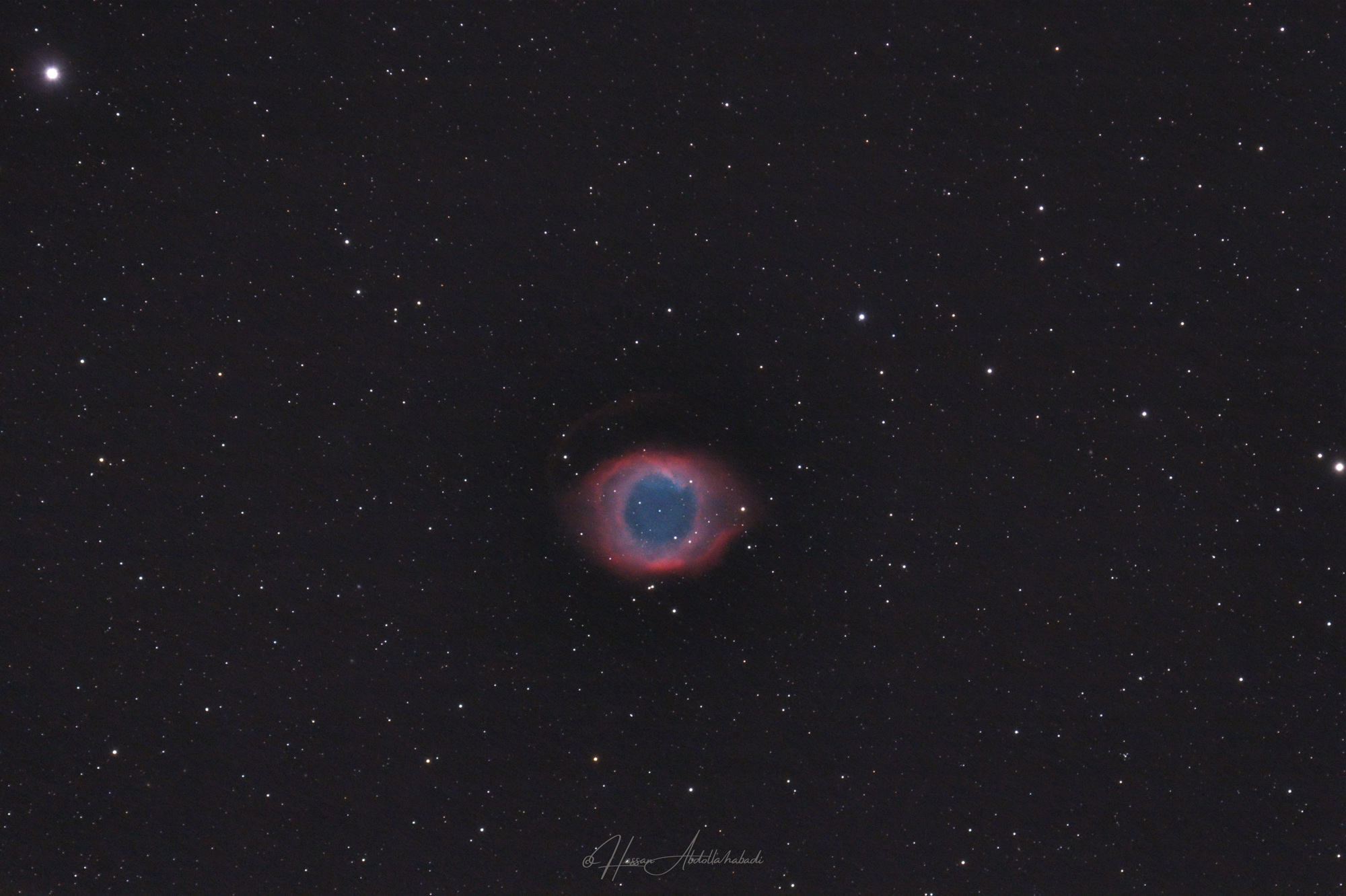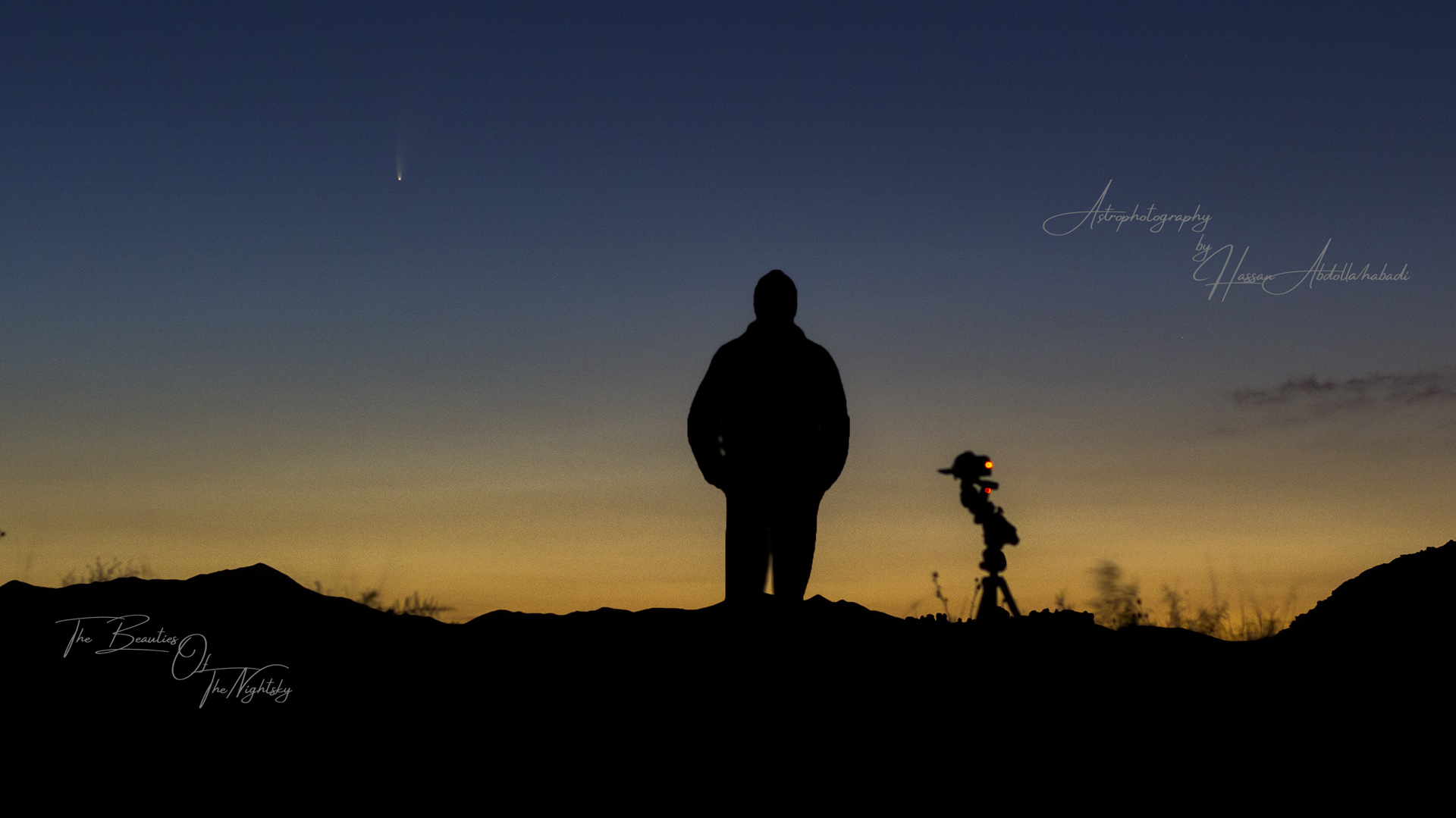
Just seven hundred light-years from Earth, Sun-like star are dying in the constellation of Aquarius.
This planetary nebula is one of the final stages of stellar evolution and a well-studied example.
The Helix Nebula, or NGC 7293, was discovered by Carl Ludig Harding in 1824. It is one of the closest and brightest annular nebulae.
Due to the low altitude of the helix in the latitudes of the northern cities of Iran and the existence of light pollution close to the horizon and Given that the Helix nebula is very dim
It is not a suitable object for imaging In Iran
Type : Planetary Nebula
Optic : SW 80 ED Apo With 0.85x Focal Reducer
Focal Length : 510 mm
Mount : Sky-Watcher Eq5
Camera : Canon 60d Modifeid
ISO(Gain) : 1250
Filters : –
Guide Scope : Web Cam, PHD Guiding
Total EXP : 2 Hours ( 20 *6 Min)
Technique used : –
Dark : Yes
Flat : Yes
Bias : Yes
Dark Flat : Yes
Software: DeepSky Stacker , Photoshop
Date Taken : 22 August 2014
Place : Avandar Village , Rivash ,Iran
سحابی هلیکس
فقط هفتصد سال نوری دورتر از زمین، در صورتفلکی آبریز(دلو) ستارهای خورشیدمانندی در حال مرگ است
این سحابی سیاره نما نوعی ازمرحلهی پایانی تحول ستارهای و نمونهای نزدیک است که به خوبی بررسی شده است
سحابی هلیکس، یا ان جی سی ۷۲۹۳، توسط کارل لودیگ هاردینگ و در سال ۱۸۲۴ کشف شد.این سحابی یکی از نزدیکترین و درخشانترین سحابیهای حلقوی است
با توجه به ارتفاع کم هلیکس در عرض های جغرافیایی شهر های شمالی ایران و وجود آلودگی نوری نزدیک به افق و با توجه به اینکه سحابی هلیکس قدری نزدیک 13 (بسیار کم نور) دارد
جرمی مناسب برای تصویر برداری نمی باشد
مرداد 1393
